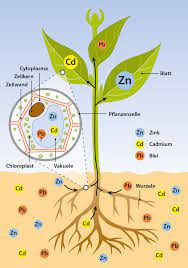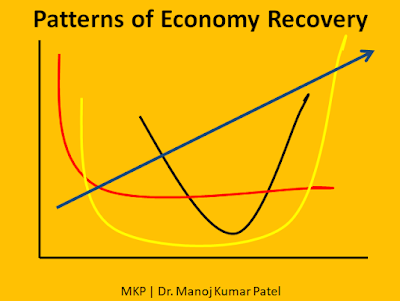PHYTOMINING: A review article on extraction of metals from plants
Phytomining is one of the steps to achieve a carbon-free economy. This technology will be extremely useful to get precious metals like lithium, thallium, gold, manganese, cobalt, and nickel which are required for use in batteries for EVs, vehicles, and motors.
Plants such as Alyssum murale can attain yields of up to 400 kg of nickel per hectare per year – worth about US$4000 at current prices, excluding production and processing costs.
Bio-sourced nickel is also unique in that it is of particularly high purity, with the processed biomass containing 20–30% nickel and few of the impurities usually associated with conventional nickel ores.
However, producing critical metals efficiently and sustainably using phytomining needs industrial champions to make this a reality.
Biogeochemists, plant scientists, chemical engineers, and mine waste experts from The University of Queensland’s (UQ) Sustainable Minerals Institute (SMI) are pioneers in phytomining and confident the time has arrived to test its operational feasibility.
Dr. Antony van der Ent, a leading phytomining researcher at SMI’s Centre for Mined Land Rehabilitation (CMLR) and the editor of the field’s first book, “Agromining: Farming for Metals” said - “At this stage, phytomining can go full-scale for nickel immediately, while phytomining for cobalt, thallium, and selenium is within reach,”.
Phytomining also makes it possible to collect low-grade, environmentally damaging metals from mine waste, essentially making ‘treasure from trash’ while also rehabilitating the mine waste.
A study by Michael Allen [2] reported that a woody shrub namely Phyllanthus Rufus Chaney on cutting generates a sap that is rich in nickel. The nickel coloring the blue-green sap of the shrub van der Ent discovered is just one of the metals we depend on. Nickel has long been a crucial ingredient in stainless steel.
Mary Halton in her article – The tree that bleeds... Metals – mentioned that “researchers have been studying Pycnandra acuminata in particular - a tree that grows on the island of New Caledonia in the south Pacific”. They think it may use nickel to defend against insects. Its latex has an unusual blue-green color as it contains up to 25% nickel [3].
Pycnandra and other hyperaccumulators have been analyzed at the DESY synchrotron in Hamburg, using an X-ray technique. "If you use a conventional microscope you can see structures, but you can't tell what it's made out of," explains Dr. Kathryn Spiers, who has also been studying Pycnandra.
Dr. Spiers used a technique that allows a sample to be imaged and rotated very quickly before it is destroyed by the X-ray beam.
Sheoran et al in their article - Phytomining of gold: A review – stated that Phytomining of gold is possible from soil substrates by harvesting specially selected hyperaccumulating plants. Phytomining has the potential to allow economic exploitation of low-grade ores or mineralized soils that are too poor for the conventional mining of metals. Gold is the most promising option for phytomining as its market value is increasing continuously. Their paper reviews various aspects of phytomining of gold, mechanism of gold uptake, economic analysis, and methodology of gold recovery from plant biomass, and future scopes of gold phytomining [4].
Anderson et al (1999) in their article - Phytomining for nickel, thallium, and gold published in the Journal of Geochemical Exploration have reported that the first phytomining experiments carried out in California using the Ni-hyperaccumulator Streptanthus polygaloides and was found that a yield of 100 kg per ha of sulphur-free Ni [5]. They used the same technique, to test the phytomining potential of the Ni-hyperaccumulators Alyssum bertolonii from Italy and Berkheya coddii from South Africa.
Analogous experiments have been carried out on Berkheya coddii where a biomass yield of over 20 t per ha can readily be achieved though the Ni concentration is not as high as in A. bertolonii.
The total yield is, however, much greater. They reported that they have also been able to induce plants to hyperaccumulate Au by adding ammonium thiocyanate to the substrate. Up to 57 mg per kg Au (dry mass) could be accumulated by Indian mustard (Brassica juncea).
Unusual hyperaccumulation (>500 mg per kg dry mass) of Tl has been determined in Iberis intermedia and Biscutella laevigata (Brassicaceae) from southern France. The Iberis contained up to 0.4% Tl (4000 mg per kg) in the whole-plant dry matter and the Biscutella over 1.5%. This unusually high accumulation of Tl has significance for animal and human health, phytoremediation of contaminated soils, and phytomining for Tl.
The economics is calculated by the researchers and they reported that using Iberis, a net return of $ US 1200 per ha (twice the return from a crop of wheat) would be possible with a biomass yield of 10 t per ha containing 0.08% Tl in dry matter. The break-even point (net yield of $ US 500=ha) would require 170 mg per kg (0.017%) Tl in dry matter. A model of a phytomining operation and its economics is presented and its advantages and disadvantages discussed.
Phytomining has, however, not yet been tested on a commercial scale and much research remains to be carried out, particularly in the field of increasing metal uptake by plants either by genetic manipulation or addition of specific reagents to the soil, and the potential leaching of metals during induced hyperaccumulation. It is only then that we shall know the true value of this proposed technology
[1] https://smi.uq.edu.au/leaders-energy-transition-sustainable-source-critical-metals-phytomining
[3] https://www.bbc.com/news/science-environment-45398434
[4]https://www.sciencedirect.com/science/article/abs/pii/S0375674213000228
[5] Anderson C.W.N. et al, 1999; Phytomining for nickel, thallium, and gold, J of Geochemical Exploration, 67: 1999: (407 – 415)
Elsevier Science B.V. 1999. All rights reserved. Keywords: Alyssum bertolonii; Berkheya coddi; phytomining; phytoremediation; gold; nickel; thallium
Anderson, C.W.N., Brooks, R.R., Stewart, R.B., Simcock, R., 1998. Harvesting a crop of gold in plants. Nature 395, 553– 554.
Baker, A.J.M., Brooks, R.R., 1989. Terrestrial higher plants which hyperaccumulate chemical elements — a review of their distribution, ecology and phytochemistry. Biorecovery 1, 81–126.
Blaylock, M.J., Salt, D.E., Dushenkov, S., Zakharova, O., Gussman, C., Kapulnik, Y., Ensley, B.D., Raskin, I., 1997. Enhanced accumulation of Pb in Indian mustard by soil-applied chelating agents. Environ. Sci. Technol. 31, 860–865.
Brooks, R.R., Lee, J., Reeves, R.D., Jaffre´, T., 1977. Detection of nickeliferous rocks by analysis of herbarium specimens of indicator plants. J. Geochem. Explor. 7, 49–57.
Chaney, R.L., 1983. Plant uptake of inorganic waste constituents. In: Parr, J.F. et al. (Eds.), Land Treatment of Hazardous Wastes. Noyes Data Corp., New York. Chaney, R.L., Angle, J.S., Baker, A.J.M., Li, J.M., 1998. Method for phytomining of Ni, cobalt and other metals from soil. U.S. Patent # 5,711,784.
Green, J., 1972. Elements: planetary abundance and distribution. In: Fairbridge, R. (Ed.), Encyclopedia of Geochemistry and Environmental Sciences. Van Nostrand Reinhold, New York, pp. 268–300.
Hung, C.H., Pavlostathis, S.G., 1997. Aerobic degradation of thiocyanate. Water Res. 31, 2761–2770. Kurz, H., Schulz, R., Ro¨mheld, V., 1997. Studies on thallium uptake by various crop plants for risk assessment of the food chain. World Wide Web at: http:==www.uni-hohenheim.de= institutes=plant_nutrition=hinstres.htm
Leblanc, M., Robinson, B.H., Petit, D., Deram, A., Brooks, R.R., 1999. The phytomining and environmental significance of hyperaccumulation of thallium by Iberis intermedia from southern France. Econ. Geol. 94, 109–114.
Minguzzi, C., Vergnano, O., 1948. Il contenuto di nichel nelle ceneri di Alyssum bertolonii. Atti Soc. Tosc. Sci. Nat. 55, 49–74.
Nicks, L.J., Chambers, M.F., 1995. Farming for metals. Min. Environ. Mgt. Mining Journal Ltd., London, Sep., pp. 15–18.
Nicks, L.J., Chambers, M.F., 1998. A pioneering study of the potential of phytomining for nickel. In: Brooks, R.R. (Ed.). Plants that Hyperaccumulate Heavy Metals. CAB International, Wallingford, 380 pp.
Sinha, Ragini et al; Chapter 21 – Phytomining: a sustainable approach for recovery and extraction of valuable metals; Phytorestoration of abandoned mining and oil drilling sites, 2021, p 407 – 506; https://www.sciencedirect.com/science/article/pii/B9780128212004000133
Reeves, R.D., Brooks, R.R., 1983. European species of Thlaspi L. (Cruciferae) as indicators of nickel and zinc. J. Geochem. Explor. 18, 275–283.
Reeves, R.D., Brooks, R.R., McFarlane, R.M., 1981. Nickel uptake by Californian Streptanthus and Caulanthus with particular reference to the hyperaccumulator S. polygaloides Gray (Brassicaceae). Am. J. Bot. 68, 708–712.
Reeves, R.D., Baker, A.J.M., Brooks, R.R., 1995. Abnormal accumulation of trace metals by plants. Mining Environ. Mgt. Mining Journal Ltd., London, Sep., pp. 4–8. Robinson, B.H., Chiarucci, A., Brooks, R.R., Petit, D., Kirkman, J.H., Gregg, P.E.H., De Dominicis, V., 1997a. The nickel hyperaccumulator plant Alyssum bertolonii as a potential agent for phytoremediation and phytomining of nickel. J. Geochem. Explor. 59, 75–86.
Robinson, B.H., Brooks, R.R., Howes, A.W., Kirkman, J.H., Gregg, P.E.H., 1997b. The potential of the high-biomass Berkheya coddii for phytoremediation and phytomining. J. Geochem. Explor. 60, 115–126.
Robinson, B.H., Brooks, R.R., Gregg, P.E.H., Kirkman, J.H., 1999. The nickel phytoextraction potential of some ultramaficsoils as determined by sequential extraction. Geoderma 87, 293–304.
Tremel, A., 1996. Transfert du thallium du sol vers la plante. PhD Thesis, Univ. Nancy, Nancy.
Tremel, A., Mench, M., 1997. Le thallium dans les sols et les ve´ge´taux supe´rieures, II. Le thallium dans les ve´ge´taux supe´rieures. Agronomie 17, 261–269.
Tremel, A., Masson, P., Sterckeman, T., Baize, D., Mench, M., 1997. Thallium in French agrosystems, I. Thallium content in arable soils. Environ. Pollut. 95, 293–302.
Zyka, V., 1970. Thallium in plants from Alsar. Sb. Cesk. Geol. Ved, Technol., Geochem. 10, 91–95.




Comments
Post a Comment